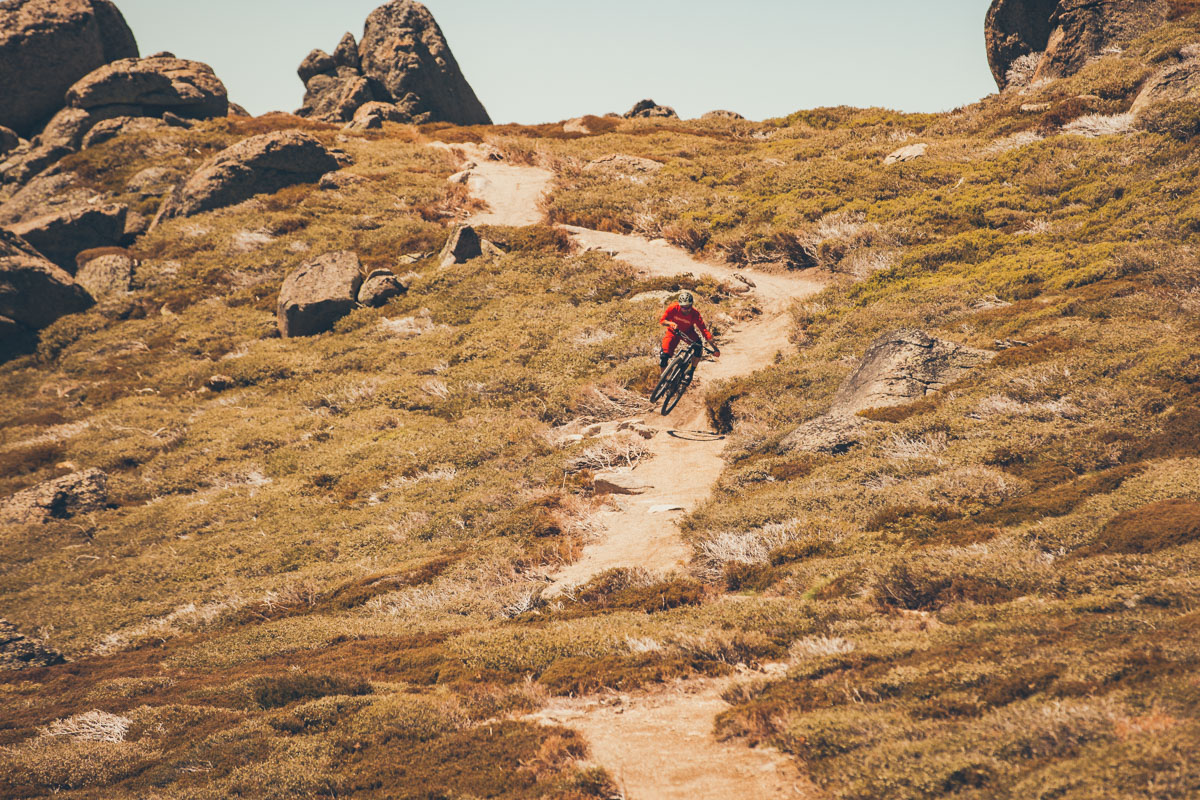
This bike comes with a legendary reputation, way back in mid-2013 it emerged as one of the first 29ers to challenge perceptions of what a big wheeler was capable of. It’s received a major overhaul for 2017, and as we discussed in our initial impressions piece back in August, we like the changes Specialized have implemented.

So, what sort of changes are we talking about?

Heading to Thredbo? We’d suggest you give the Makin Trax Basecamp a try. They hosted us for our week in Thredbo, and it was the perfect setup for our crew of six riders. With five bedrooms, to sleep up to 12 riders, a huge kitchen, an open fire and plenty of space to store your bikes, it’s just bloody ideal. They’re doing some great accommodation and lift pass packages too. Take a look!
Firstly, a glance at the geometry chart for the Enduro tells you that Specialized has given this bike the ‘long, low and slack’ treatment. In our large 29” Enduro, a roomy 604mm top tube is paired with a 66-degree head angle and 432mm chainstays. For a bike that can also accept 27.5×3.00 tyres, that’s a pretty short rear end!

Speaking of 27.5×3.00 tyres, for our test we’re going to be alternating between the stock 29” wheels and tyres and a set of 650B+ wheels, to see exactly how the bike changes with wheel and tyre size.

How much travel is the Enduro 29/6Fattie equipped with?
The Enduro 29/6Fattie comes equipped with a 160mm fork and 165mm of rear-end travel, which is a smidgen less than you’ll find on the 650B version of this bike, which is 170mm front and rear. Even still, 165mm on a 29er is a hefty amount of travel. Will it prove too much?

Is that Öhlins suspension front and rear?
It sure is! We’ve reviewed the RXF 34 fork in the past, and we rated it highly, so we’re excited to get some riding in on the RXF 36, which as the name suggests comes with 36mm stanchions, as opposed to 34mm. In this longer travel format, we think we’ll be able to get a better idea of the performance on offer, which was a little tricky to appreciate in the shorter travel version we previously tested.

What about the frame itself?
Another big tick from us is the inclusion of the SWAT box in the Enduro’s downtube. We love sneaking in rides without a backpack whenever possible, so keeping the SWAT compartment packed with essential spares and room for a snack means that you can pop a bottle on the bike and you’re ready to head out for at least a couple of hours. With the riding this bike is aimed at, you’re going to appreciate not having weight on your back and being able to move around the bike freely!

Another change to the frame design is the cable routeing. All the internal routeing is guided by sleeves within the frame, which means fewer hassles when working on the bike. Adding to this, Specialized have moved the rear brake and derailleur cables from exiting underneath the bike to running through the chainstays, which eliminates the chance of them snagging and bashing into debris out on the trail.

There seems to be a lot of 170mm ‘enduro specific’ bikes cropping up, do I need one of these bikes if I’m not racing?
Whilst the emerging trend of 170mm ‘enduro’ bikes is perhaps overkill for a lot of riders, the bike still only weighs a hair over 13 kilograms, so if descending is your priority, then maybe this is the right bike for you, regardless of if you plan to race or not.

Anyhow, we’re off to do a few laps of the hill here at Thredbo – stay tuned for our detailed review shortly!
